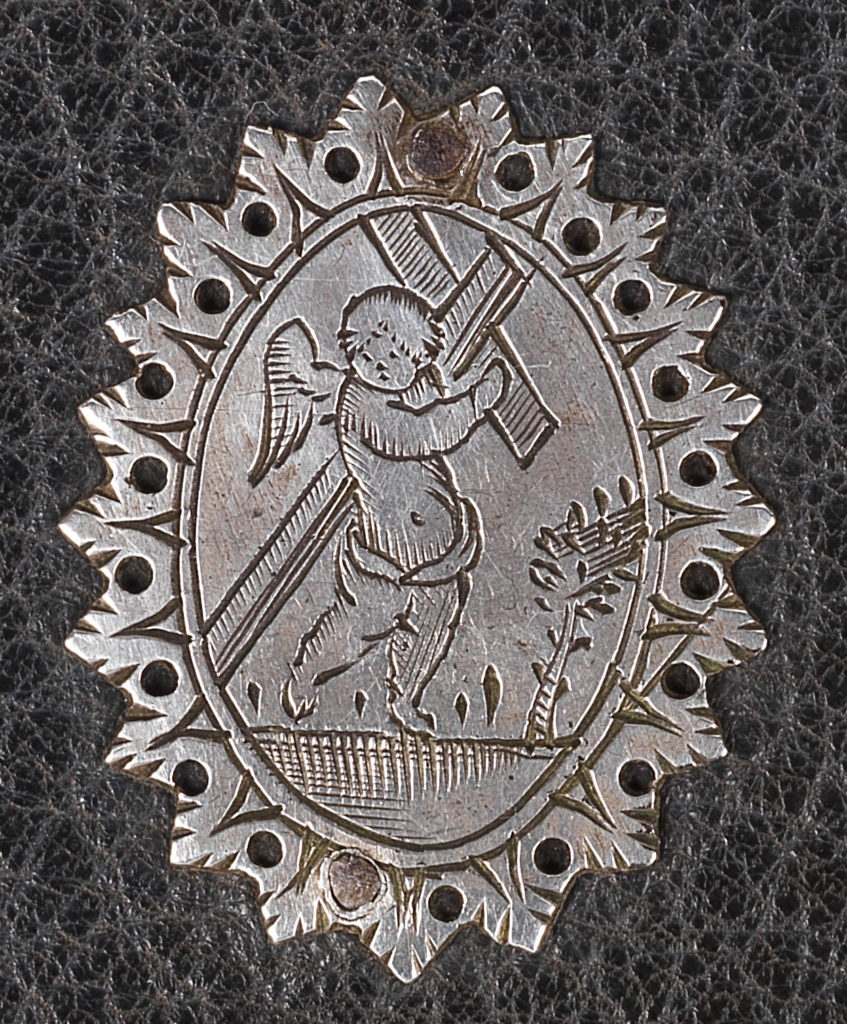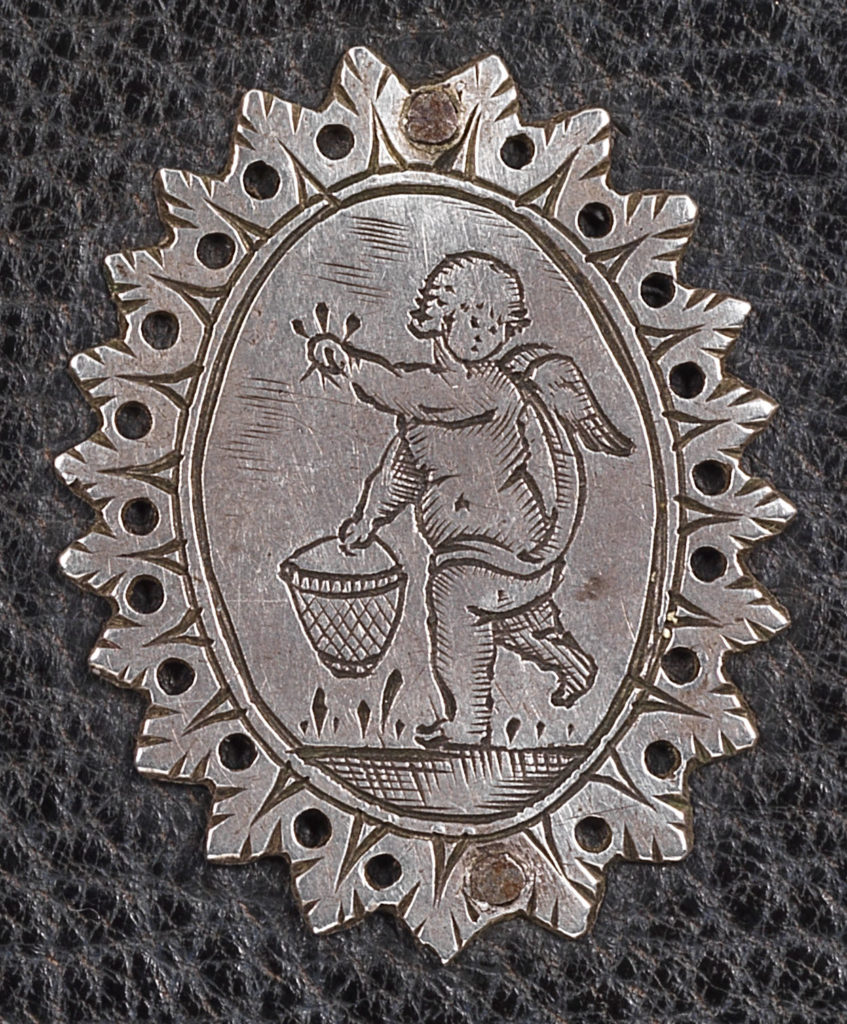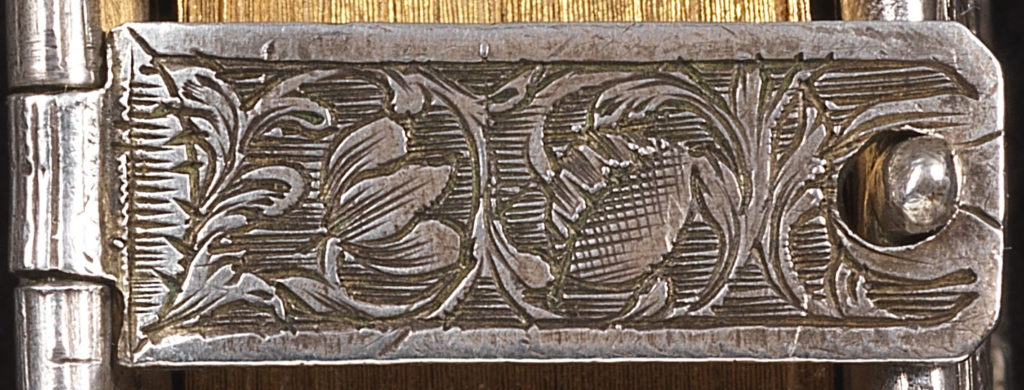
In making their picture books, Christina and Magdalena Küsel compressed the Old and New Testaments into a selection of prints representing tales from each book of the Bible. A German text, probably printed separately from the engravings as letterpress, identifies the scene along with the book and chapter of the Bible from which it derives. There are 132 prints in the Old Testament and 131 prints in the New.
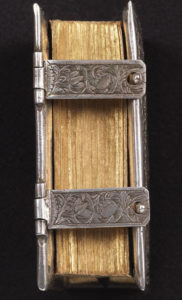 The devotional purpose of the engravings also coincided with an interest in and taste for beautifully crafted small objects. The sisters utilized traditional religious subjects but also drew attention to their skills as designers of complex engravings: their refinement, craftsmanship and physical scale all require close scrutiny, as well as being highly portable devotional supports. Such delicate and complicated works were not likely produced en masse for children or as popularising instruments, but rather for an educated elite within Augsburg and beyond.
The devotional purpose of the engravings also coincided with an interest in and taste for beautifully crafted small objects. The sisters utilized traditional religious subjects but also drew attention to their skills as designers of complex engravings: their refinement, craftsmanship and physical scale all require close scrutiny, as well as being highly portable devotional supports. Such delicate and complicated works were not likely produced en masse for children or as popularising instruments, but rather for an educated elite within Augsburg and beyond.
The fine silverwork of the Kuslers’ Bibles, including the clasps engraved with a delicate pattern of leaves and flowers, is original to the books but the leather binding as well as the marbled endpapers on the inside and the trimming and gilding of the pages are likely to have been later additions, possibly dating from the Victorian period. It was acquired by the collector and artist Thomas Gambier Parry (1816-1888), who was a devout Christian, in a small town near Nuremberg in 1851.
It may have been at this time that the order of the pages was inadvertently altered. For example, in this set the Fall in Genesis III (numbered p. 6) comes before the Creation of Man in Genesis II (numbered p.4), reversing the natural order of the Genesis narratives. Further research into these books is needed to find out whether this was indeed a mistake on the part of the binders or whether there may have been another reason behind this reversal.
The Bindings
The two pairs of oval silver plaques on the covers are interesting: they show a putto carrying a cross (recto) and a putto sowing seeds (verso).
The image of a putto sowing seeds encapsulates the function of these portable personal bible books. Like the putti, they plant the seeds of sacred truths in the spiritual garden of the soul.
[Another interpretation of what the putto might be doing has come to light since originally publishing these page, and is plausible if not in fact more likely. Find out more.]
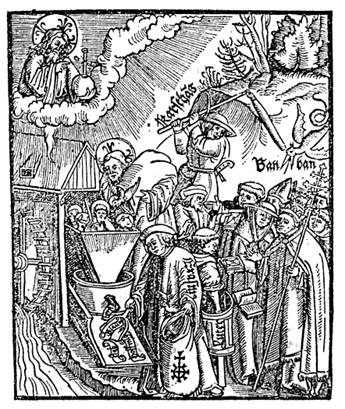
The image is reminiscent of a woodcut published in Augsburg in 1521 called The Divine Mill; Christ is shown shaking the grains of the Divine Word into a mill to express a pathway for new interpretations and translations of the sacred scriptures.
Back to German Miniature Picture Bibles

